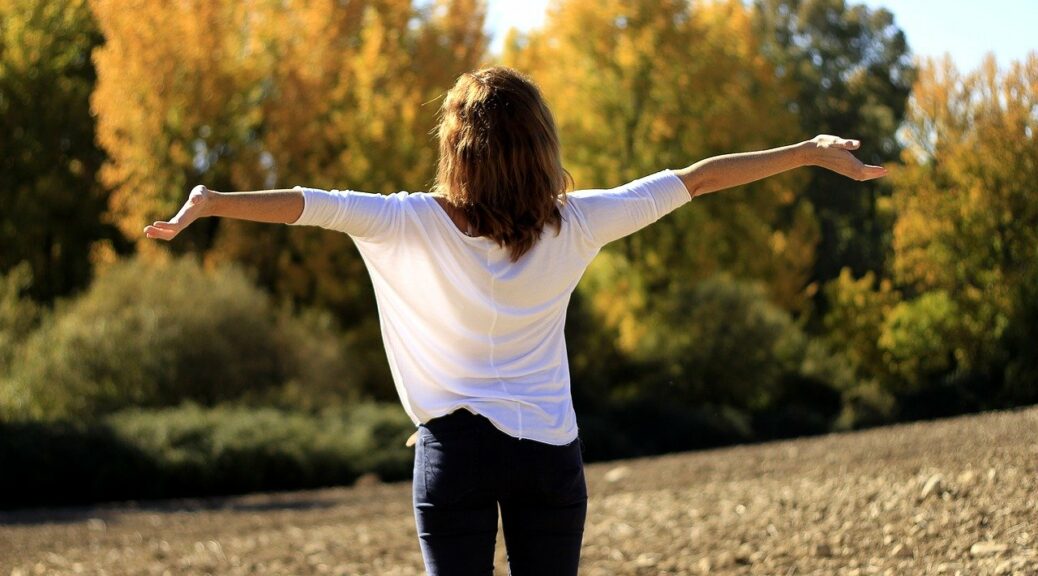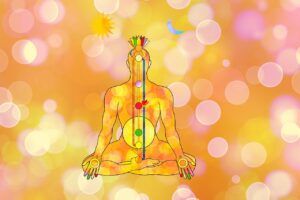
Deep Breathing For Energy – 5 Pranayam Techniques for Your Wellbeing
Learning deep breathing for energy can improve your wellbeing. Here are 5 techniques you can try.
Did you know that you can only survive 4 minutes without oxygen?
That is how long it takes for the brain cells to stop functioning. Yet, we do not give much attention to the quality of our breathing.
Do you feel fatigued when climbing up the stairs, walking up a slope, or simply by rushing around in your day-to-day routine?
Then it is time to stop and find out about deep breathing for energy.
Are you aware you can eliminate anxiety, stress, and even depression if you become conscious and do proper breathing?
Read more below for helpful breathing exercises that you can practice at the comfort of your home or even when on the go.
Today I have been to an interesting yoga class. The instructor was from India, and he did a very complete class starting with energetic warm-up exercises, followed by a few minutes of the physical exercise called sun salutation. Then continued with a few asanas, and afterward, we did some very interesting breathing exercises. After that, we had a couple of minutes of meditation and ended the class with some relaxation techniques.
I had participated in similar classes in India and Sri Lanka and had forgotten about the wonderful physical sensation and mental well-being both during and after finishing the yoga session.
The class inspired me to share with you this information on DEEP BREATHING EXERCISES.
Are YOU Using Your Full Lung Capacity?
In Yoga, breathing is called Pranayam, which is a series of specific controlled breathing exercises to increase vital energy.
The practice of yoga encourages the correct way of breathing, whereby you inhale and exhale from your nose, keep your mouth closed and use the full lung capacity.
Apparently, in our normal breathing from the chest, only a third of the lung capacity is being used.

Proper deep breathing will fill your lungs with oxygen and the vital energy is stored in the chakras or energy points in the body. You are constantly using this energy with every movement and thought, therefore it is important to recharge and breathe consciously ∼ breathe deeply.
The average person breathes from the chest (using chest and shoulder muscles), also called shallow breathing and it is not enough; to obtain the maximum vital energy from inhalation, you need to breathe from the diaphragm through deep breathing.
Diaphragmatic breathing is when you are lifting your stomach with each inhalation instead of your chest.
When you use the full lung capacity you are inhaling more oxygen, which increases the metabolic rate. At the same time, the digestive system as well as the elimination system function better.
Notice how you breathe when you are agitated or angry; rapid, short, and shallow breathing
Observe how you breathe when you are tranquil or profound thinking; slow, long, and deep breathing.
Short breathing limits mental alertness.
It is not recommended to breathe through the mouth otherwise the air is not filtered as it does when inhaling through the nostrils. The olfactory system at the back of your nose and in the nasal cavity filters and cleans the inhaled air.
Slow exhalation is recommended to expel the stagnant air and replace it with fresh air.
5 Pranayam Techniques
The sitting posture: Wear comfy clothes, sit with your legs crossed, or the lotus or meditation posture in yoga, and keep your back straight with the spine, neck, and head in alignment. If you are uncomfortable you can put a blanket or a block underneath, for better adjustment.
Relax and keep your eyes closed during the exercise.
Note: For those who prefer to watch breathing techniques, here is a good video by Swami Ramdev. Unfortunately, it is in Hindi and there are no subtitles, but still worth watching. It is very pleasant to see how they educate kids from a young age on the importance of deep breathing.
So now let´s find out what are the 5 Pranayam Techniques.
1.Bhastrika Pranayam
Start with a chest breathing exercise. This is an easy way of doing it. Bring your hands to your chest at a right angle, holding the right arm on top of the left one, and the elbows should be at chest length. Breathe in and exhale extend both elbows to the sides at once, and release the air from your nostrils with force. Repeat 20 consecutive times and rest. Do 3 rounds x 20 respiration.
2.Kapalbhati Pranayam
This is a highly beneficial exercise for your health, as it massages the internal organs including the stomach, liver, spleen, pancreas, and kidneys and it enhances your digestive function.
To practice, inhale twice, then do fast repeated exhalation through the nose, and at the same time, you pull your tummy in with each inhalation. Repeat 20 TIMES FOR 3 ROUNDS.
3.Anuloma Viloma Pranayam
This breathing exercise is good for the nervous system. It is also called alternate nostril breathing, as that is how the exercise is carried out. Hold your hand in meditation Nashik Agra mudra, by pressing the index and forefinger into your palm and the rest of the fingers held straight.
Take a few deep breaths to relax the body.
Now start from the right nostril, press the thumb to your nose to close the right nostril to breathe in from the left nostril. Next with your ring finger cover the left nostril and breathe out from your right nostril. This is considered as one round of Anuloma Viloma breathing.
Repeat for 6 rounds in total.
For beginners, you should inhale and exhale for an equal amount of time or count. Progressively you can increase the duration to 1:2, that is, inhale count 4, exhale count 8. For the more advanced, then you should apply the 4-16-8 breathing technique, that is, inhale count 4, retain count 16, and exhale count 8. There is more benefit of the exercise on the retention and releasing stage as you are eliminating toxins.
4.Bhramari Pranayam
Good for anxiety and depression. Cover your ears with your thumbs and cover your eyes with the 3 fingers (just place the fingers on your ears and eyes, you don´t need to put any pressure), lift your tongue against the palate, breathe in and then do a humming sound to create a vibration to activate the brain. Repeat 6 times.
5.Udgeeth Pranayam
Breathe in and on exhalation say THE MANTRA OHM and feel the vibration all over your body, that will relief all the tension.
Repeat a few times.
DON´T FORGET TO KEEP A SMILE ON YOUR FACE.
Benefits of deep breathing
- controls asthma
- prevents low and high blood pressure
- reduces heart diseases
- dissolves emotional stress
- relaxes and clarifies the mind
- enhances concentration
- increases self-control and willpower
- helps with insomnia
- lessens depression
- soothes headaches
- alleviates pain during childbirth
Conclusion – Rehearse Pranayam
Today I have described 5 breathing techniques that are beneficial to your health. They come in handy in a moment of anxiety.
So, next time you are experiencing stress, you know what you have to do. Remember the state of mind, whether calm or agitated, reflects in your breathing.
Through deep breathing, your body will be filled with vital energy, and you will be able to control your emotions better.
Thus, in moments of apprehension and distress, once you master breathing techniques, you can control the stress better.
I hope you will find the time to practice the above breathing exercise, and most important that you find them useful.
8 thoughts on “Deep Breathing For Energy – 5 Pranayam Techniques for Your Wellbeing”
hello, i really want to first appreciate your effort in putting this great website together and writing this article. even with my knowledge of breathing, i did not know about so this much techniques and wow you have brought to light, much benefits of deep breathing that will help me become conscious.
Hi Benny, thank you for writing and I am happy you find the breathing exercises beneficial to your health.
Good to know that you can only survive 4 minutes without oxygen. This information can help manage risk when it comes to finding yourself in a perilous situation. Also good to know is that proper breathing can eliminate anxiety, stress and even depression. The 5 Pranayam Techniques indeed sound very beneficial, and I am particularly interested in Bhramari Pranayam. I am looking forward to trying this technique first and I have saved your post in order to refer to the others as well. Great post and thank you!
Hi, many thanks for reading and for sharing. Deep breathing can be very calming and it is a useful exercise especially in strenuous situations.
Thank you for your post. It is useful information for me. I started my online business for a while now and sit in the front of my computer long hours daily. My breath is shallow and sometimes I feel no energy. I want to know the reason for this, never take time to do the research.
Here comes your article. One reason could be that I have shallow breathing for too long time. As you describe “to obtain the maximum vital energy from inhalation, you need to breathe from the diaphragm through deep breathing” I need to practice deep breathing and use the full lung capacity. I think this is the way to improve breath and energy source. I am going to practice Diaphragmatic breathing now.
It is kind of you sharing this health habits with us.
Hi Anthony, I am glad you like the article and hopefully you will find the exercise effective. Thank you for writing.
Hello Marisa. Good to see you share the 5 Pranayam Techniques of Deep Breathing for Energy. Deep breathing indeed equals energy. I am a singer and I have been told several times and I have also learnt that singing from the diaphragm is singing with heavy breath. This is power and energy indeed. I am pretty amazed to see this guide using Yoga. Nice…
Regards!
Hi, thank you so much for your insight. I did read about the importance of deep breathing exercises for singing. It does feel great when practising deep breathing on a frequent basis.